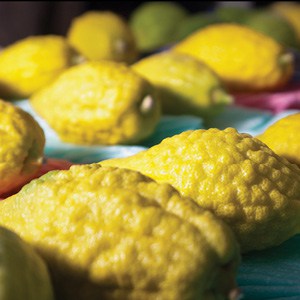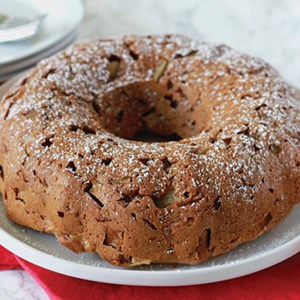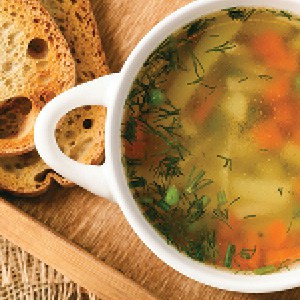A quick glance at a Jewish calendar for October reveals a month filled with holiday days—beginning with October 1, the second day of Rosh Hashanah and ending with October 22, the final day of Simcha Torah.
The season brings celebrations, atonements, reflections, and, of course, lots of eating. Even Yom Kippur, the fast day, begins and ends with festive meals.
Not surprisingly, this section offers two articles dealing with food: A gluten-free cake recipe on page 18 and some great tips on what to eat before the Yom Kippur fast to ease the water- and food-free 25-hour period. (page 19) The suggestions make perfect sense. Sometimes, we all just need to see the obvious in print.
On a very different subject, forgiveness, the article on page 16 is probably relatable to any parent…no matter a child’s age.
According to the article about the Etrog on page 17, the fruit actually has more uses than what we know it for…being held beside the lulav. Who knew?
One more thing…Congregation Beth Chaverim was inadvertently omitted from the High Holiday services listing in the September 16 issue of Jewish News. We apologize for the error. This year, Beth Chaverim is holding joint services with Tidewater Chavurah at Old Donation Episcopal Church Parish Hall in Virginia Beach. Their Yom Kippur service information is below.
Happy 5780!
Terri Denison
Editor
The working parents’ collective apology on Yom Kippur
(Kveller via JTA)—Like so many of you, I’m a working mom trying to juggle it all—my kid, my job and, you know, my life. For the High Holidays, I was inspired to write a working parents’ version of the Ashamnu, an alphabetic acrostic of our collective transgressions, which is part of the public confession we recite during Yom Kippur.
This year, 5780, I strive to acknowledge my wrongdoings, to do better by my little guy and my family, and to forgive myself and others more.
- For the sin of not acknowledging mistakes, and not asking when we need help, and not meaningfully apologizing as much as we should.
- For the sin of talking about how busy we are.
- For the sin of trying to control everything, even when we know that’s totally impossible and frustrating.
- For the sin of being distracted and not giving our children our full attention.
- For the sin of having no energy at the end of a long work day to truly connect or play with our kids.
- For the sin of forgiving in others for what we can’t find a way to forgive in ourselves.
- For the sin of giving more attention to our professional work than to our kids.
- For the sin of not doing everything we can to help: for not using every extra ounce of energy, every extra penny, every extra waking moment to do what we can for children separated from their families at the border.
- For the sin of Instagram: spending too much time on it, and for only showing all that is beautiful and fun instead of the hard, everyday truths.
- For the sin of judging other parents and the decisions they make for their kids and families. (I’m still so upset with myself for judging that mom who had her toddler with her at Target at 11 p.m.—more likely she had no other time to run those critical errands, and no one to watch her child.)
- For the sin of thinking we know best.
- For the sin of lamenting the easier days before we had kids.
- For the sin of making excuses.
- For the sin of saying “no” so often.
- For the sin of overprogramming, overscheduling, and overindulging our children.
- For the sin of prescribing our children’s interests by allowing capitalism to dictate what toys and clothes we purchase for them. (Really, why is the doll aisle so pink? And why are dinosaurs a boy thing?)
- For the sin of questioning the intentions of others instead of assuming everyone is doing the best they can.
- For the sin of resisting when sometimes it’s easier to just say yes. (But also: ¡vive la resistance!)
- For the sin of keeping our heads down looking at our screens.
- For the sin of too much television and not enough conversation.
- For the sin of undermining how hard we work when we obsess over how we can do better.
- For the sin of not voting and not vaccinating. (#sorrynotsorry—I have strong opinions that neither of these are OK choices.)
- For the sin of wanting more instead of being content with what we have.
- For the sin of xenophobia—something that I abhor in others but fear I may practice in small and unknowing ways.
- For the sin of yelling.
- For the sin of thinking about parenting in terms of zero days (losing) or 100 days (winning)—when we know many days are just going to be a 40 degree day, and that’s OK.
May the gates of repentance be open to us all. G’mar Chatima Tova!
Shira Zemel
Shira Zemel is a working mom in Washington, D.C., where she directs youth leadership development at the Religious Action Center of Reform Judaism. She and her husband have a two-year-old son.
The etrog is Judaism’s best kept wellness secret
 (Alma via JTA)—For most Jews, the etrog, a thick-rinded citrus, is relegated to a fleeting, supporting role. Held beside the lulav (palm frond) once a year during the upcoming festival of Sukkot, the etrog (citron) is then left to dry out or, if it’s lucky, turned into jelly.
(Alma via JTA)—For most Jews, the etrog, a thick-rinded citrus, is relegated to a fleeting, supporting role. Held beside the lulav (palm frond) once a year during the upcoming festival of Sukkot, the etrog (citron) is then left to dry out or, if it’s lucky, turned into jelly.
We have massively underestimated this super citrus.
The etrog is far more than a prop, it’s a wellness goldmine that’s been lauded throughout history—from Alexander the Great’s troops who may very well have (but probably didn’t) discover it when passing through Persia, to Buddhist monks in ancient China—for its wide-ranging healing properties.
It also has great genes! As one of the oldest citrus varieties, the etrog is basically the great-great-grandfather of oranges and lemons, which were developed through hybridization with it.
Luckily the Yemenite Jewish community stayed woke and quietly enjoyed the etrog’s numerous benefits for centuries until, 15 years ago, a shrewd entrepreneur named Uzi Eli set about introducing Israelis to the generations-old etrog-centric remedies passed down in his family. Known as the “Etrog Man,” Eli opened a stall in Jerusalem’s Machane Yehuda market and Tel Aviv’s Carmel market over a decade later.
He’s a colorful character who once told me that his secret to looking far younger than his 70-plus years was etrog juice and breast milk—his sole form of nourishment until the age of 10.
I spent a lot of time with Eli and his daughter Maayan, who mans the Tel Aviv stall with impossibly dewy skin while working as a culinary tour guide in Israel. For months I watched from afar, bemused, as they shpritzed and massaged various oils and creams on unsuspecting tourists on the promise that they would cure acne, fade wrinkles and increase libido.
I stopped being a bystander when Maayan insisted on rubbing their etrog-infused vitalium lotion, a “multi-use herbal concentrate [that] functions as a comprehensive local analgesic,” on a nasty-looking burn I’d acquired while wrestling my oven that morning. Two days later, with no trace of a scar, the burn was gone—and I was hooked.
Like Uzi Eli, Ayurvedic medicine, a holistic healing system developed in India over 3,000 years ago, uses etrog juice to curb nausea and excessive thirst. References in Ayurvedic literature from 800 B.C. have led many to believe that the citron is native to India. Others argue that it originated in China, where until today, a variety known as the Fingered Citron (also known as Fo Shou or, my personal favorite, Buddha’s Hand), is used to treat nausea, bloating, and chronic coughs.
Perplexingly, the Greek philosopher Theophrastus, sometimes referred to as the “Father of Botany,” praised the vomit-inducing properties of the etrog, which he prescribed when “one has drunk a deadly poison.” This seems to be a Bertie Bott’s Every Flavour Beans situation, best played only by the sturdy-stomached.
For the more cautious, I’d suggest brewing a simple tea from the etrog’s leaves, or mixing etrog jelly with sugar and honey a la yuja-cha, a popular Korean cold remedy made with yuzu. Modern medicine advises avoiding the etrog’s seeds, contrary to the advice of Pliny the Elder—a Roman Empire-era commander, naturalist, and etrog enthusiast who endorsed chewing the seeds to reduce morning sickness.
Despite his dodgy advice, Pliny wasn’t alone in connecting the etrog to pregnancy. Due to its breastlike appearance, the citron is a feminine symbol in Jewish spiritualism and has long been linked to childbirth-related segulot (Jewish superstitious charms or rituals). One segula dictates biting off the pitom (stigma) to guarantee a son, or placing it under your pillow for an easy labor.
To the cynics among you, I can only relay my sister-in-law’s story with a shrug: Force-fed etrog jam by my mother-in-law when her contractions began on the promise that it would ensure the birth was as painless as possible, my niece basically fell out. After pestering my mom friends for intricate play-by-plays of their birthing experience, I take the view that anything that could potentially reduce the torment of childbirth is worth a try.
When it comes to wellness, we need not look much further than Jewish healing and spiritual tradition. The etrog, which combines both, is an excellent place to start. Now who’s up for a cuppa?
Rachel Myerson
Rachel Myerson is a freelance journalist from the United Kingdom now based in New York after a five-year stint in Tel Aviv. She writes about all things cultural, with a focus on food, and has been published in Time Out, Vice and the Forward, among others.
This Apple Cake recipe is a perfect dessert for Rosh Hashanah if you’re gluten-free
 (JTA via The Nosher)—In recent years, it seems that more and more of my family members and friends have developed food allergies and food intolerances. This can make it difficult to determine what to serve at holidays and family events. So a gluten-free, dairy-free apple cake for the High Holiday season is a delicious way to celebrate while also suiting everyone at my table.
(JTA via The Nosher)—In recent years, it seems that more and more of my family members and friends have developed food allergies and food intolerances. This can make it difficult to determine what to serve at holidays and family events. So a gluten-free, dairy-free apple cake for the High Holiday season is a delicious way to celebrate while also suiting everyone at my table.
Nut allergy? You can absolutely leave out the walnuts here.
My preferred gluten-free flour to use is Bob’s Red Mill Gluten-Free 1-to-1 Baking Flour, which can be used as a direct substitution for all-purpose flour and doesn’t require additional thickeners such as xanthan gum.
Apple Cake
Ingredients
- ¼ cup coconut sugar or brown sugar
- 1 cup extra-virgin olive oil
- 2 large eggs, room temperature
- ²⁄3 cup honey
- 1 teaspoon vanilla extract
- 2½ cups gluten-free baking flour
- 1 teaspoon baking powder
- 1 teaspoon baking soda
- 1 teaspoon ground cinnamon
- 1 teaspoon salt
- ¹⁄8 teaspoon allspice
- 3 apples, peeled, cored and chopped into ¼-inch pieces (I recommend using a mixture of green and red apples)
- ²⁄3 cup walnuts, finely chopped (optional)
- Unsweetened plain almond milk (optional)
Directions
- Preheat oven to 325 F. Grease and lightly flour a 9-inch bundt pan (nonstick, if you have one).
- In a stand mixer, beat together the sugar and olive oil. Beat in the eggs, then the honey and vanilla. Turn off the stand mixer.
- In a separate large bowl, stir together the gluten-free flour, baking powder, baking soda, cinnamon, salt and allspice.
- Turn the stand mixer back on, and very slowly add the flour mixture to the wet ingredients. Use a spatula to scrape down the sides of the bowl, ensuring that all the ingredients become well incorporated.
- Fold in the diced apples and walnuts. If you find that the mixture is too thick, you can add some almond milk, 1 tablespoon at a time, not to surpass ¼ cup.
- Pour the batter into the prepared bundt pan and bake in the oven for 1 hour. Check the cake at the 50-minute mark. It is done when a toothpick inserted comes out clean. Once done, allow the cake to cool in the bundt pan for 15 minutes. Then place a cake plate on top of the bundt pan, and while holding the pan and the plate together, very carefully flip the bundt pan so the cake lands directly onto the cake plate.
- Allow the cake to cool completely and then dust lightly with confectioners’ sugar. Serves 6–8.
Rachel Pattison
Rachel Pattison is a healthy food blogger living in Los Angeles. She loves taking traditional recipes (including Jewish family recipes!) and finding ways to make them healthier. You can find more of her recipes on her blog, www.littlechefbigappetite.com.
Rosh Hashanah greeting from Gandhi discovered at National Library of Israel
JERUSALEM (JTA)—A Rosh Hashanah greeting written by Mahatma Gandhi on the day that the Nazis invaded Poland has been discovered at the National Library of Israel.
The handwritten letter from the famed Indian advocate of nonviolence to A.E. Shohet, the head of the Bombay Zionist Association, is dated Sept. 1, 1939. The library placed it online this month.
“Dear Shohet, You have my good wishes for your new year,” the letter reads. “How I wish the new year may mean an era of peace for your afflicted people.”
The greeting was discovered as part of a major National Library of Israel initiative to review millions of items in its archival collections, which include personal papers, photographs and documents. The library’s initiative is with support from the Leir Foundation.
Shohet was an Indian Jew from the Baghdadi community in Bombay. He also headed Bombay’s Keren Hayesod office and served as editor of the Jewish Advocate newspaper.
Shohet had interviewed Gandhi earlier that year, in March, at his ashram in Wardha, according to the National Library.
Gandhi had called for resisting Nazism solely through nonconfrontational means.
“My sympathies are all with the Jews.… If there ever could be a justifiable war, in the name of and for humanity, war against Germany to prevent the wanton persecution of a whole race would be completely justified. But I do not believe in any war,” he wrote in November 1938.
Not long before he was assassinated in January 1948, Gandhi called the Holocaust “the greatest crime of our time,” yet maintained that “…the Jews should have offered themselves to the butcher’s knife. They should have thrown themselves into the sea from cliffs…It would have aroused the world and the people of Germany.… As it is they succumbed anyway in their millions.”
Marcy Oster
Young Jewish people receive free High Holidays seats throughout the nation
More than 1,100 synagogues across the United States and around the world are welcoming Jewish college students and young adults to worship with them for the High Holidays for free.
Synagogue Connect is helping Jewish young people between the ages of 18 and 26 to find the synagogue with the appropriate affiliation near them to attend Rosh Hashanah and Yom Kippur services.
Synagogue Connect was founded in 2017 by Rabbi Ronald Brown and Charles Klein. It uses an online system to make the matches. It also works with Alpha Epsilon Pi Fraternity and Alpha Epsilon Phi Sorority to continue building its list of synagogues.
“Our purpose is to help young adult Jews connect, reconnect—or in some cases connect for the first time—with a synagogue in their city, whatever denomination they choose,” Brown says.
In addition to the United States, the service includes synagogues in Canada, Israel, Europe, Australia, and South Africa. More than 30 countries have participating synagogues. (JTA)
Marcy Oster
Six tips on eating before the Yom Kippur fast
 (The Nosher via JTA)—Yom Kippur is one of the most, if not the most, important day on the Jewish calendar. For many Jews, fasting and being in synagogue is the focus of the day.
(The Nosher via JTA)—Yom Kippur is one of the most, if not the most, important day on the Jewish calendar. For many Jews, fasting and being in synagogue is the focus of the day.
Fasting is not easy, nor is it for everyone—some people cannot fast because they are pregnant, breastfeeding, or have a medical condition. Or they simply do not function well abstaining from water and food for a 25-hour period.
But for those who choose to fast as a meaningful way to engage in Yom Kippur, there are actually foods that can set you up for a more successful, less onerous fast.
As I researched for this article, I found that most people stick to a menu that is classic and delicious, but not too crazy or spicy: chicken soup, chicken, rice or pasta, a vegetable, some challah, and water.
Here are more tips on eating before the fast.
- Avoid foods that are hard to digest.
Now this might be different for everyone, but in general stay away from heavy meat dishes, fried foods, or lots of dairy. Because you know, Jewish stomachs. - Eat foods that have fiber and water.
Foods with lots of fiber will keep you fuller longer, and foods with water (like fruits and vegetables) will keep you hydrated. Chickpeas or lentils are a great vegetarian protein source to eat, especially a dish like mujaderra. A hearty chicken soup with noodles or rice and lots of veggies is another safe bet. - Avoid salt.
Salty foods like olives, pickles, chips, canned soup, or dishes made with those bouillon cubes will bloat you and make you even more thirsty. So stick to something a little blander for that pre-fast meal. - Avoid sugar.
Too much dessert before fasting may cause your blood sugar to spike and then come crashing down, which can be unpleasant at its least and cause a headache or moodiness at its worst. Too much sugar also makes you thirsty, like salt, and will have you craving more sweets during your fast. - Drink water.
This is pretty obvious, but make sure to drink plenty of water, not only at the meal right before the fast begins, but the days preceding as well. - Avoid eating too much.
Eat a moderate-sized meal that leaves you satisfied, but not unbuttoning your pants. You will feel uncomfortable and it will be more difficult to digest a monstrous-sized meal.
Shannon Sarna

